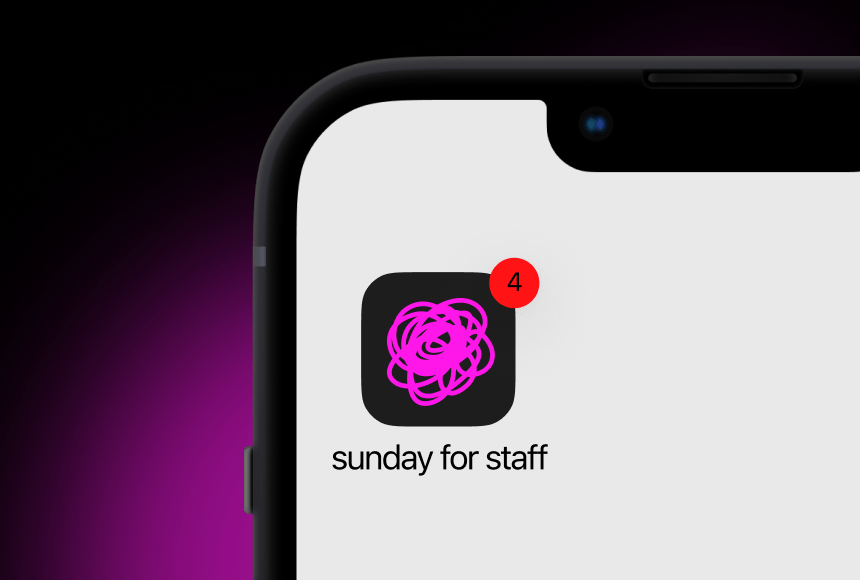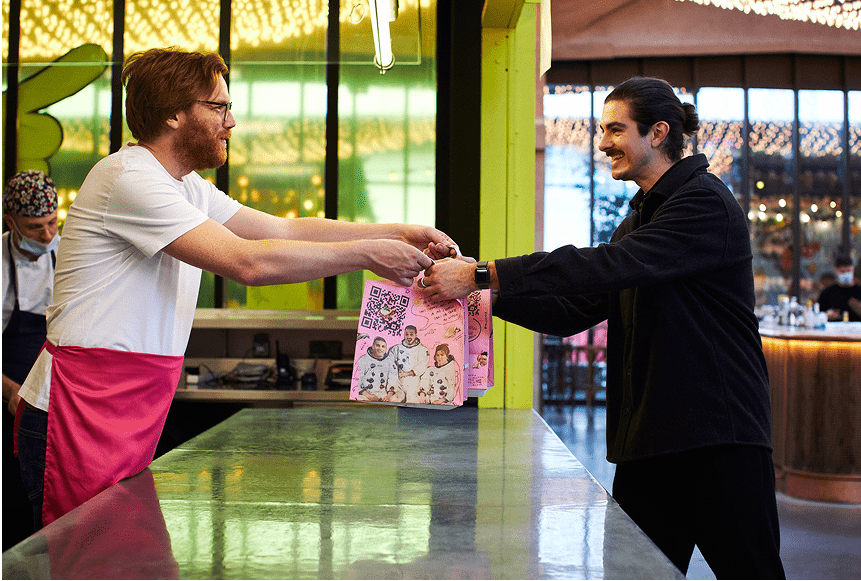
QR Codes: The Untapped Powerhouse for Smoother Restaurant Payments
Why We’re Talking About QR Code Payments
You’ve likely seen them on menus, flyers, posters, and even on your favourite sauce bottles—those black-and-white square codes known as QR codes. They’re silent little squares that promise a swift digital handshake between customer and service. But did you know that QR code payments can transform your restaurant’s operations more profoundly than you might imagine?
I know what you’re thinking: “This again? Weren’t QR codes a niche convenience that rose during the pandemic?” Well, the funny thing is, they’re still here—and for good reason. In fact, QR codes have proven to be a robust payment solution, reducing wait times and enhancing the customer experience drastically. They’re not just a fleeting fad; they’re establishing themselves as a mainstay in some of the UK’s most forward-thinking dining spots.
Today, we’re going to tackle the why, the how, and the crucial benefits for you—yes, vous, the restaurant owner—looking to simplify payments, ease staff workloads, and keep customers coming back. And trust me, the benefits run deeper than just looking trendy on the table.
A Quick Glance at QR Code Payment: Setting the Table
Before diving deeper, let’s define what we mean by QR code payment. In essence, it’s a method where diners scan a special barcode (the “QR code”) with their smartphone. The code leads them to a secure webpage or payment platform, where they can review their bill, add a tip, and pay instantly—no physical card machine, no fumbling for cash.
For UK business owners, it’s worth noting that QR code payments fit neatly into existing contactless and digital payment trends. According to a report by UK Finance, contactless transactions soared to over 14 billion payments in 2021 alone. People are used to tapping and scanning; in many ways, QR code adoption is a natural evolution.
But how do you know it’s the right time for your restaurant to embrace this technology? Think of it like upgrading your kitchen’s equipment—there’s a certain point when the return on efficiency, reliability, and customer satisfaction becomes impossible to overlook.
The Evolution: From Card Machines to Instant Scans
In the not-so-distant past, a card machine (sometimes called a PDQ machine in the UK) was the pinnacle of modern payment convenience. It replaced the old, clunky manual swipe terminals and allowed for quick card transactions. But let’s be honest, even card machines come with their challenges:
- Battery life: They can die on you at inopportune moments.
- Connectivity: Spotty Wi-Fi or 4G means slow processing or dropped connections.
- Physical handling: Passing the terminal around large tables can be a balancing act.
On top of this, card machines still require staff time and attention. With QR payments, your customers handle the entire payment process themselves—at their own pace—freeing up your team to focus on service quality, whether that’s bringing out fresh dishes or explaining allergen details with more flair.
Speed, Efficiency, and a Dash of Hospitality
Imagine a dinner service at your restaurant: your servers are racing around, and everyone wants to pay at once. Card machines end up creating mini queues at each table. Meanwhile, some guests still need the final dessert order, and others are waiting for water refills.
That’s where QR code payments shine. By simply scanning the code on the table or on the bill, each guest can view their itemised check and settle it—no staff intervention needed. The result? Less friction, happier staff, and guests who feel in control.
But let’s go deeper. QR code payments help solve multiple pain points simultaneously:
- Reduced wait time: No one is left waiting for a server or a card machine.
- Less staff burden: Staff can address other tasks instead of constantly managing payments.
- Intuitive add-ons: Offering an easy tip feature or opting for last-minute add-ons becomes straightforward.
From your perspective, this can be akin to having more sous chefs in the kitchen. While you’re focusing on your restaurant’s ambience and culinary excellence, the QR code payment system handles the “dirty dishes” of the payment process in the background.
Serving Security on a Silver Platter
Given the rise of digital transactions, security is a top concern for you and your patrons. QR codes sometimes get a dubious rap: “Isn’t it easy to hack them?” or “What if someone replaces my official QR code with a malicious one?” Let’s break down the security layers that reputable QR code payment services employ:
- Secure encryption: The data behind the code is encrypted. Even if someone tries to tamper with the printout, the system recognises mismatched links.
- Permanent or dynamic codes: Some restaurants opt for “dynamic” codes that are unique to each table or receipt, preventing misuse.
- External payment gateways: The actual payment is handled through secure gateways that follow PCI DSS (Payment Card Industry Data Security Standard) compliance.
In other words, properly implemented QR code payments are no more vulnerable than conventional card machines. In fact, the frictionless nature of scanning from one’s own phone can feel even safer to customers, as they aren’t handing their card to anyone.
What Could Possibly Go Wrong? Overcoming Staff Concerns
When introducing new technology, it’s natural for staff to have questions or concerns. “How do we handle errors?” “What if the customer doesn’t know how to scan?” Here’s a piece of advice: treat this adoption like rolling out a new menu item.
Take time to train your front-of-house team on how to help guests scan a code (it takes less than a minute to learn) and what to do if a smartphone can’t read it (you might need a backup contactless option on standby). Some staff might worry that their tips will drop when everything goes digital. In fact, many restaurants find tips increase, as QR code payment systems typically include a tip prompt—an easy choice for guests who had a great experience.
And let’s not forget about older customers, or those less tech-savvy. You’ll likely find most are already equipped to handle QR codes, given smartphones do most of the work—no separate app required. However, as a kindness to your guests, ensure a staff member is always available to assist and provide an alternative payment option if needed.
From “Check, Please” to “Review, Please”
A hidden gem of QR code payments is the potential to gather feedback and boost your restaurant’s online reputation. After a successful transaction, many systems can prompt the diner to leave a review on Google or a similar platform. Why does this matter?
- Real-time impressions: The moment a meal ends is the prime time for honest feedback.
- Organic marketing: Positive Google reviews can be a goldmine in attracting new customers.
- Immediate connection: If there’s an issue, you can know instantly and address it—rather than losing a customer silently.
It’s similar to handing diners a comment card, except more efficient. Instead of lost or ignored cards, you get direct online testimonials that can translate into higher footfall.
Some restaurants using QR code payments have seen a 40% increase in the number of reviews accumulated on major search engines, simply because it’s so easy for a guest to tap “Yes, I’d like to leave a review” after paying.
Case Study: The Rose & Thyme Bistro
Let’s put all this into perspective with a fictional example—a small but popular spot called The Rose & Thyme Bistro in Bath. Renowned for its farm-to-table British cuisine, the bistro was facing a recurring challenge: on busy weekends, customers waiting for the bill easily added 15 minutes to their overall dining time. Servers were juggling the demands of new arrivals and finishing tables simultaneously.
After implementing QR code payments at each table, the owner noticed these changes within three months:
- Table turnover time improved by an average of 10 minutes
- Staff reported feeling less stressed at peak hours
- Tips rose by 20%, as customers found it easy to add a tip digitally
- Online reviews increased, with nearly 60 new Google reviews in that three-month window
What seemed at first like a minor tweak—replacing their traditional card machine approach with smartphone-enabled payments—created a ripple effect of benefits. The staff had more time to enrich their service, and diners left feeling well cared for, not rushed or delayed by the payment process.
Money Matters: Taking a Closer Look at ROI
One question that might pop into your head is the financial implication of adopting QR code payments. Typically, fees associated with these mobile solutions are comparable to (and sometimes lower than) card processing fees. Here’s the breakdown of what you might expect:
| Aspect | QR Code Payment | Traditional Card Machine |
|---|---|---|
| Hardware Costs | Minimal – often just a printed code or small sign | Higher – purchase/lease cost of machines |
| Processing Fees | Similar to card fees; can vary by provider | Standard card processing fees |
| Maintenance | Virtually none – no battery or mechanical parts | Maintenance or replacement fees for broken terminals |
| Staff Time | Lower – self-service for customers | Higher – staff involvement in every payment |
Adding it all up, QR code payments could be friendlier to your bottom line over time. While any new system has some implementation and training costs, you quickly recoup that investment by saving on hardware maintenance and speeding up table turnover.
Beyond the Bill: Other QR Code Perks
QR codes aren’t limited to payments alone. The same system can be used for:
- Menus: Guests scan to see a digital menu, cutting down on physical menus and potential contamination.
- Ordering: In some cases, you can let diners place orders directly after scanning—a game-changer for busy lunch hours.
- Feedback forms: If you want more detailed feedback, you can guide them to a short survey once they’ve paid.
- Loyalty programmes: Offer a digital stamp card or points system accessible through the same QR code.
Think of QR codes as a Swiss Army Knife for your restaurant’s digital layer. You can keep adding tools to refine the customer experience, gather data for your marketing strategies, and maintain better contact with diners who appreciate that personal touch.
Practical Tips for a Smooth Implementation
Rolling out QR code payments at your restaurant can be as easy as adding a new dish to your menu—but planning helps. Here are some tips to make the transition seamless:
- Start with a pilot: Trial the system on a few tables or specific days. Gather feedback from both staff and guests.
- Train your team: Ensure everyone knows how to troubleshoot basic issues, like phone scanning problems or payment confirmations.
- Promote it: Put a small sign or mention on your menu: “Scan to Pay—No Waiting!” This not only informs customers but also encourages them to give it a try.
- Offer alternatives: Keep a card machine on hand for guests who prefer the traditional route or whose smartphones aren’t cooperating.
Once you’ve nailed the basics, you can explore advanced features—like ordering, loyalty tie-ins, or even reservations. Start small and scale up as you see success.
Understanding the Sunday Factor
At this point, you might be wondering if there’s a turnkey solution out there for these QR code payments. That’s exactly where sunday’s solution comes in handy. By integrating with your existing setup, you can create a secure, easy, and lightning-fast payment experience for your guests. Striking the balance between user-friendliness and robust performance has always been key for solutions like sunday.
When we talk about transforming the payment experience, we’re ultimately aiming for a scenario where both staff and customers feel at ease. Sure, you’ve got your card machine as a fallback, but the moment you see diners scanning a QR code, tipping generously, leaving a quick review, and walking out with smiles on their faces, you’ll understand the lasting impact this system can have.
Conquering Common Myths About QR Code Payments
Let’s address a few myths or misconceptions you might still have:
- It’s only for tech-savvy customers: Actually, QR scanning is built into most smartphones’ cameras today. Young or old, your patrons often just need the simplest nudge to use it.
- Setting it up is expensive: In many cases, all you need are printed codes (very low cost) and a service provider that integrates with your POS. Much cheaper than purchasing multiple new card machines.
- Staff tips will disappear: Experience shows the opposite. The digital tip prompt often yields higher average gratuities.
- Not secure enough: Reputable QR payment providers use encryption and secure payment gateways. They’re well within the standards set by the payments industry.
By identifying and debunking these myths, both you and your staff can move forward confidently. After all, this is about elevating hospitality, not replacing it.
Practical Engagement: Making Your QR Codes Shine
There’s a small but significant detail to consider: how you present the QR code itself. A scruffy piece of paper taped to the edge of the table doesn’t exactly scream “top-notch dining experience.” Instead, consider:
- High-quality printing: Use durable material for table tents or coasters.
- Clear instructions: A short line, such as “Scan here to Pay or Order” with an arrow pointing to the code.
- Branding: Integrate your logo or colours so the code looks like part of the decor.
- Good positioning: Make sure it’s easily visible and accessible—no one should have to awkwardly stretch over a plate of pasta to scan.
It might feel like a minor detail, but aesthetics do matter. If you want to create a smooth, unified experience, presenting QR codes as an elegant part of your table setup sets the stage for a premium touch.
Looking Ahead: The Future of Restaurant Payments
The future of restaurant technology is as fresh and exciting as a new seasonal menu. We’re already witnessing:
- Voice-assisted ordering
- Biometric payments (think facial or fingerprint recognition)
- Expanded loyalty schemes integrated into digital wallets
QR codes are part of this forward momentum. As customers become more comfortable with scanning to pay, restaurants are finding innovative ways to build on that familiarity, from interactive menus to augmented reality experiences. You don’t have to adopt every new trend, but staying on top of payment evolution can keep your business competitive in a crowded market.
And in a practical sense, anything that streamlines the often messy end-of-meal ritual is a win for everyone—no more chasing customers with a card machine, and no more uncertain eye contact between diner and server about who does what next.
FAQ: Your Burning QR Code Payment Questions
Do customers need a special app to scan QR codes?
Most modern smartphones allow users to scan QR codes directly from the camera app. If for some reason it doesn’t work, there are plenty of free QR scanning apps available. As a restaurant owner, you might offer a gentle reminder on the menu or table card: “Open your camera and point at the code to scan.”
Is this technology suitable for small, independent restaurants?
Yes. In fact, smaller restaurants can benefit immensely because QR code payments reduce the need for multiple card machines and expedite table turnover. As long as you have a solid internet connection and a service provider to handle the back end, you’re good to go.
How do I manage refunds or payment disputes with QR codes?
Refunds in QR code payment systems work similarly to other forms of digital payments. Simply initiate a refund through your payment or POS system, and the money returns to the customer’s account. Keep clear records, just as you would with card payments, to resolve any disputes.
Are there any hidden costs I should be aware of?
While you’ll pay standard transaction fees (comparable to card processing fees), there may be a nominal subscription fee depending on your provider. Always check the fine print: if you partner with a service like sunday, the transparent fee structure ensures you know exactly what you’re paying for.
Does offering QR code payments mean I should stop accepting cash or card?
Not necessarily. Think of QR code payments as an additional option, rather than a replacement. Many restaurants continue to accept cash and card, especially for those customers who aren’t yet comfortable with digital methods. Over time, however, you may notice more guests choosing QR code payments naturally.
The Final Slice of Advice
QR code payments might appear to be a minor twist, but they truly hold huge potential to improve operations, delight customers, and help your restaurant adapt to an ever-changing dining landscape. With minimal setup and an immediate payoff in terms of efficiency and guest satisfaction, it’s no wonder more restaurants across the UK are embracing this nifty payment revolution.
So if you’re weighing the pros and cons, think of it this way: just like introducing a new, exciting dish on your menu, implementing QR code payments can revitalise the way you serve—and the way your customers respond. In a climate where diners expect speed, security, and a slick experience, these black-and-white squares on the table might just be your secret ingredient to greater success.
Find out more today
Drop us your details below and we’ll reach out within the next 24
“Bill please” is a thing of the past.
With our integrated QR codes your customers pay in seconds, straight from their table.




